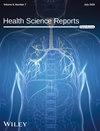Noninvasive Assessment of Coronary Artery Disease: Recent Techniques, Diagnostic Accuracy, and Clinical Implications for Modern Cardiology–A Narrative Review
Abstract
Background and Aims
Coronary artery disease (CAD), a leading cause of death globally, is among the most commonly diagnosed manifestations of heart disease. Although invasive coronary angiography (ICA) remains the “gold standard” to detect CAD, it is accompanied by several limitations. This review aims to present recent Noninvasive diagnostic modalities in CAD, report and compare the diagnostic accuracy of different invasive and noninvasive tests in CAD, and analyze both the current and future clinical implications of noninvasive modalities that regularly evaluate CAD in modern cardiology.
Methods
Given this background and purpose, various, reliable online sources were searched to find relevant data for our narrative review. To this end, several databases were consulted including Google Scholar, PubMed, and Embase.
Results
The weight of the evidence highlights that the accuracy of several noninvasive diagnostic modalities in CAD is high and the choice of the most suitable noninvasive diagnostic testing mainly depends on local resources, tests' features, and patients' characteristics, which determine the pretest probability of CAD. For patients presenting an intermediate pretest probability of the disease noninvasive testing seems to be appropriate.
Conclusion
Noninvasive diagnostic modalities could limit the usage of invasive modalities in CAD. Nowadays, noninvasive diagnostic modalities are increasingly being promoted as they provide useful and reliable information about the various aspects of CAD. Undoubtedly, more efforts are needed to optimize noninvasive diagnostic tests to demonstrate their full potential in CAD.

 求助内容:
求助内容: 应助结果提醒方式:
应助结果提醒方式:


